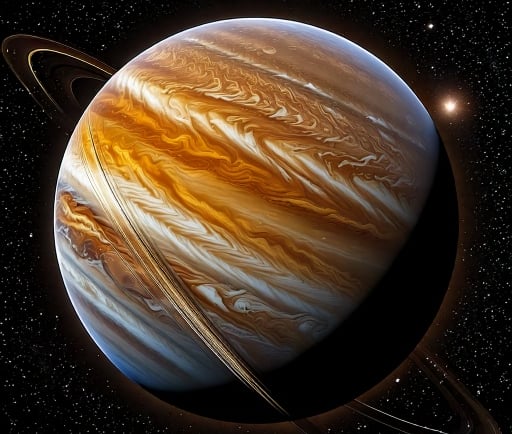The Gamma Librae C: In the Binary System


Introduction to Gamma Librae C
Gamma Librae C, a fascinating exoplanet, has garnered significant attention since its discovery in 2018. Orbiting the star Gamma Librae, it is a gas giant that boasts a mass of 4.58 Jupiter masses. Its discovery was made possible through the technique of Doppler spectroscopy, which analyzes the motion of stars caused by orbiting planets. This post aims to delve into the intricacies of Gamma Librae C, its characteristics, and its unique orbital dynamics.
Characteristics of Gamma Librae C
This particular exoplanet is characterized by its substantial mass and gaseous composition. Being 4.58 times the mass of Jupiter, Gamma Librae C presents itself as a formidable presence in its solar system, challenging our understanding of gas giants and their formation. Gas giants, such as Gamma Librae C, are typically composed primarily of hydrogen and helium, lacking a solid surface which makes them quite different from terrestrial planets. Moreover, the atmosphere of Gamma Librae C is likely to feature dynamic weather patterns, including strong winds and potential storms that are characteristic of such massive planetary bodies.
Orbital Resonance and Discovery Significance
What sets Gamma Librae C apart is its intriguing 7:3 orbital resonance with Gamma Librae B, another exoplanet in the system. This type of orbital resonance is a phenomenon observed when two bodies exert a regular, periodic gravitational influence on each other, typically when their orbital periods are related by a ratio of small integers. The 7:3 resonance allows astronomers to glean insights into the dynamical behavior and stability of the planetary system around Gamma Librae. Understanding these resonances can provide valuable information regarding planet formation and evolution in exoplanetary systems.
The discovery of Gamma Librae C adds to the growing catalog of exoplanets, offering a unique opportunity for scientists to study gas giants and their properties beyond our solar system. As telescopes and observational techniques advance, further studies will likely reveal more about Gamma Librae C and its environment.
Conclusion
In conclusion, Gamma Librae C stands as a significant addition to our understanding of exoplanets. With its impressive mass, gaseous nature, and distinctive orbital resonance with Gamma Librae B, this exoplanet not only intrigues astronomers but also deepens our knowledge of how such planets exist and interact in their respective systems. Future research and exploration will continue to unlock the mysteries surrounding Gamma Librae C, making it a key player in the ongoing quest to comprehend the universe's vast array of planetary bodies.
